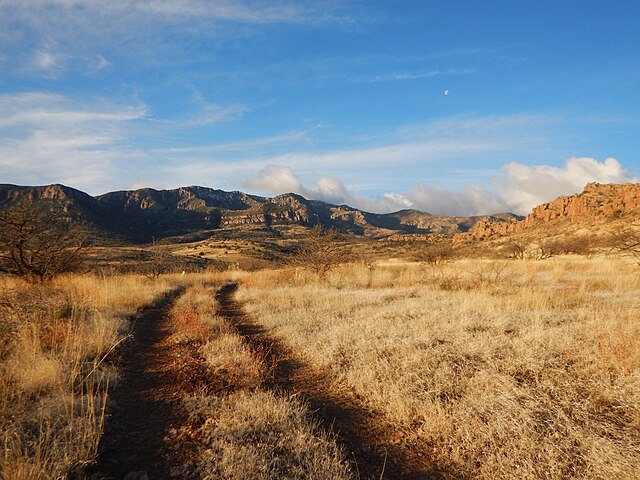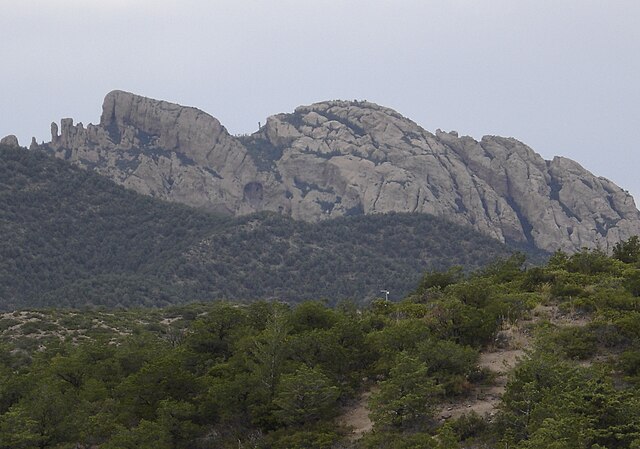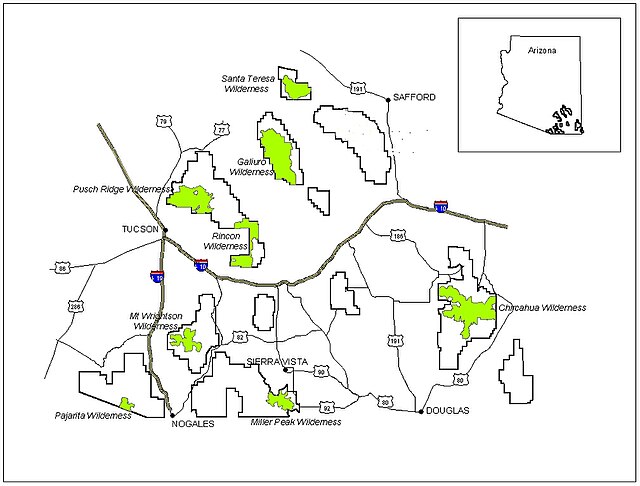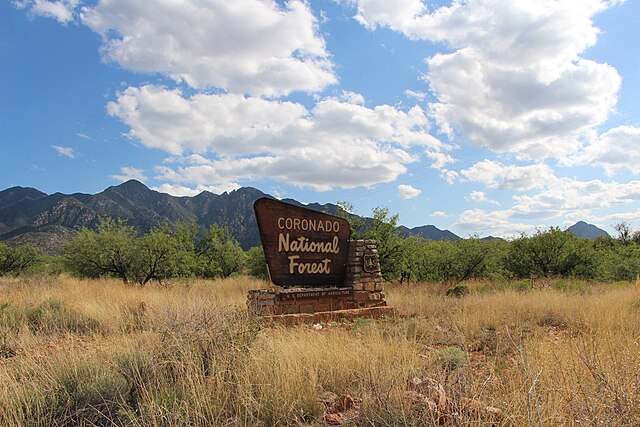Have you ever wondered what it feels like to escape into a world where towering peaks meet desert landscapes, and diverse ecosystems create a natural wonderland? Welcome to Coronado National Forest, Arizona’s best-kept secret that spans across southeastern Arizona and southwestern New Mexico. This magnificent forest covers over 1.78 million acres of pristine wilderness, offering visitors an incredible blend of desert, grassland, and mountain environments that will leave you breathless.
Coronado National Forest isn’t just another destination on your travel bucket list – it’s a transformative experience that connects you with nature’s raw beauty. Whether you’re an avid hiker seeking challenging mountain trails, a wildlife photographer hunting for the perfect shot, or a family looking for outdoor adventures, this forest delivers experiences that create lasting memories.
Tonto National Forest – Arizona’s Largest Forest Wilderness
What Makes Coronado National Forest Special?
Geographic Overview and Location
Coronado National Forest stretches across the “Sky Islands” of southeastern Arizona, creating a unique ecosystem that rises dramatically from desert floors to alpine peaks. Picture this: you can start your morning in Sonoran Desert terrain and end your day surrounded by cool pine forests at elevations reaching over 10,000 feet. It’s like having multiple climates and ecosystems packed into one incredible destination.
The forest encompasses twelve separate mountain ranges, each offering its own personality and attractions. From the popular Santa Catalina Mountains near Tucson to the remote Peloncillo Mountains along the New Mexico border, every range tells a different story through its geology, wildlife, and hiking opportunities.
Unique Ecosystems and Biodiversity
What sets Coronado National Forest apart from other southwestern destinations is its incredible biodiversity. These “Sky Islands” create isolated mountain ecosystems surrounded by desert valleys, resulting in species diversity that rivals tropical rainforests. You’ll find plants and animals here that exist nowhere else on Earth.
The elevation changes create distinct life zones, each supporting different communities of plants and animals. Desert grasslands give way to oak woodlands, which transition into pine-fir forests, and finally reach alpine meadows at the highest peaks. This vertical diversity means you can experience multiple ecosystems in a single day of hiking.
Best Time to Visit Coronado National Forest

Seasonal Weather Patterns
Timing your visit to Coronado National Forest can make or break your experience. The forest’s diverse elevations mean weather conditions vary dramatically depending on where you plan to spend your time. Spring (March through May) offers mild temperatures and wildflower blooms, making it perfect for lower elevation hikes and camping.
Summer brings monsoon season from July through September, creating dramatic afternoon thunderstorms that provide relief from desert heat but can make high-country hiking dangerous. Fall (October through November) delivers some of the year’s best weather, with cool mornings, warm afternoons, and stunning autumn colors in the higher elevations.
Winter transforms the highest peaks into snow-covered wonderlands, perfect for those seeking cooler weather activities and unique desert-mountain snow contrasts. However, many high-elevation roads become impassable during winter months.
Peak vs Off-Season Advantages
Peak season (October through April) brings perfect weather but also crowds and higher accommodation costs. You’ll find popular trails busier and campgrounds filling up quickly, especially on weekends. However, this is when you’ll experience the forest at its most comfortable and accessible.
Off-season visits during summer months offer solitude and unique experiences like monsoon storms, but require careful planning around extreme heat in lower elevations. Early morning starts become essential, and you’ll need to carry extra water and sun protection.
Top Hiking Trails and Outdoor Adventures
Mount Lemmon Trail System
Mount Lemmon, rising 9,157 feet above sea level, serves as the crown jewel of the Santa Catalina Mountains. The drive up the Catalina Highway alone provides breathtaking views and access to numerous trailheads. This area offers everything from easy nature walks to challenging multi-day backpacking adventures.
The Marshall Gulch Trail provides an excellent introduction to Mount Lemmon’s ecosystem, winding through aspen groves and pine forests that feel more like Colorado than Arizona. For experienced hikers, the Wilderness of Rocks area offers technical scrambling and stunning granite formations that challenge both your skills and your camera.
Chiricahua Mountains Wilderness
The Chiricahua Mountains, known as the “Land of Standing Up Rocks,” create one of Arizona’s most unique landscapes. Volcanic activity millions of years ago carved these mountains into fantastic rock formations that defy imagination.
Heart of Rocks Trail
This moderate 7.4-mile loop trail takes you through the most spectacular rock formations in the Chiricahuas. You’ll walk among balanced rocks, natural arches, and towering spires that look like they belong in a fantasy novel. The trail requires some scrambling but rewards you with views that photographers travel across the country to capture.
Echo Canyon Trail
For those seeking a shorter adventure, the Echo Canyon Trail provides easy access to impressive rock formations. This 3.3-mile loop trail features gentle grades and interpretive signs that help you understand the geological forces that created this wonderland.
Santa Rita Mountains
Madera Canyon
Madera Canyon represents one of Arizona’s premier birding destinations and offers hiking trails for every skill level. The canyon’s unique position creates a natural funnel for migrating birds, making it a hotspot for species diversity that attracts birders from around the world.
The Nature Trail provides an easy introduction to the canyon’s ecosystem, while the more challenging Vault Mine Trail leads to panoramic views of the surrounding desert valleys. Pro tip: visit during migration seasons for the best birding opportunities.
Wildlife Watching and Photography

Bird Species and Migration Patterns
Coronado National Forest hosts over 400 bird species, making it one of North America’s premier birding destinations. The diverse elevations and ecosystems create habitats for everything from desert species like Gambel’s quail to high-elevation residents like Mexican spotted owls.
Spring and fall migrations bring waves of warblers, hummingbirds, and raptors through the mountain corridors. Madera Canyon alone records over 240 species, including rare Mexican species that barely cross into the United States. Early morning and late afternoon provide the best viewing opportunities.
Mammal Spotting Opportunities
The forest’s mammal population includes black bears, mountain lions, white-tailed deer, and the elusive jaguar. While large predators remain rarely seen, smaller mammals like coatimundis, javelinas, and various squirrel species provide excellent photography subjects.
Dawn and dusk offer the best chances for wildlife encounters. Water sources like springs and stock tanks concentrate animal activity, especially during dry seasons. Remember to maintain safe distances and never feed wildlife.
Camping and Accommodation Options
Developed Campgrounds
Coronado National Forest offers numerous developed campgrounds that provide amenities while maintaining that outdoor camping experience. Rose Canyon Campground on Mount Lemmon provides cool summer camping at 7,000 feet elevation, complete with restrooms, picnic tables, and fire rings.
Reef Townsite Campground in the Chiricahuas offers a more remote experience with access to hiking trails and rock formations. These campgrounds typically operate on first-come, first-served basis, so arrive early during peak seasons.
Dispersed Camping Rules
For those seeking solitude, dispersed camping allows you to create your own campsite in undeveloped areas. You can camp free for up to 14 days in a 30-day period, but you must follow Leave No Trace principles and camp at least 100 feet from water sources.
Popular dispersed camping areas include Forest Service roads in the Santa Rita Mountains and remote areas of the Peloncillo range. Always check current fire restrictions and carry adequate water supplies.
Getting There and Transportation
Accessing Coronado National Forest depends on which area you plan to visit. Tucson serves as the main gateway, providing easy access to Mount Lemmon via the Catalina Highway and to Madera Canyon via Interstate 19.
The Chiricahua Mountains require more planning, accessed through Willcox or via Highway 181 from Interstate 10. Road conditions vary seasonally, with high-elevation areas potentially requiring four-wheel drive or chains during winter months.
Flying into Tucson International Airport provides the most convenient access, with rental car agencies available for ground transportation. Phoenix Sky Harbor Airport offers more flight options but requires a longer drive to reach the forest.
Essential Planning Tips for Your Visit

Planning your Coronado National Forest adventure requires attention to several key details that ensure a safe and enjoyable experience. First, check current conditions and closures before departing, as monsoon damage, wildfires, or snow can impact road and trail access.
Water availability varies dramatically throughout the forest, so always carry more than you think you’ll need. Desert hiking requires at least one gallon per person per day, while cooler mountain areas still demand careful hydration planning.
Permits aren’t required for day hiking, but overnight camping in wilderness areas requires advance planning and proper food storage. Black bears inhabit the forest, making bear-safe camping practices essential for overnight visitors.
Cell phone coverage remains spotty throughout much of the forest, so inform someone of your plans and expected return time. Carry emergency supplies including first aid kits, emergency shelter, and navigation tools beyond your smartphone.
Conclusion
Coronado National Forest stands as one of America’s most diverse and rewarding outdoor destinations, offering experiences that range from desert hiking to alpine adventures. Whether you spend a weekend exploring Mount Lemmon’s trails or embark on a week-long photography expedition through the Chiricahuas, this forest provides memories that last a lifetime.
The forest’s unique “Sky Island” ecosystem creates opportunities to experience multiple climates and environments without traveling thousands of miles. From birdwatching in Madera Canyon to rock scrambling in the Wilderness of Rocks, every visit reveals new wonders and perspectives.
Your adventure in Coronado National Forest awaits – pack your hiking boots, grab your camera, and prepare to discover why this hidden gem ranks among America’s greatest natural treasures. The mountains are calling, and Arizona’s Sky Islands are ready to share their secrets with you.
Frequently Asked Questions
Q: Do I need permits to hike in Coronado National Forest?
A: Day hiking doesn’t require permits in most areas, but overnight camping in designated wilderness areas requires permits. Some popular areas may have seasonal restrictions, so check with local ranger stations before your visit.
Q: What’s the best base camp for exploring multiple areas of the forest?
A: Tucson provides excellent access to Mount Lemmon, Santa Rita Mountains, and reasonable driving distance to the Chiricahuas. For extended Chiricahua exploration, consider staying in Willcox or Portal.
Q: Are there dangerous animals I should worry about?
A: Black bears, mountain lions, and rattlesnakes inhabit the forest. Follow proper food storage practices, make noise while hiking, watch where you step, and maintain awareness of your surroundings. Animal encounters remain rare with proper precautions.
Q: Can I bring my dog hiking in the forest?
A: Dogs are welcome on most trails but must remain on leash in developed areas. Wilderness areas allow off-leash dogs under voice control, but consider wildlife encounters and pack extra water for your furry companion.
Q: What should I do if I encounter severe weather?
A: Monsoon storms can develop rapidly, creating flash flood conditions and lightning danger. Monitor weather forecasts, start early, and have shelter plans. If caught in storms, avoid washes and seek sturdy shelter away from tall trees or exposed ridges.

